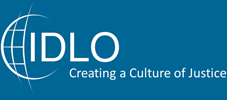Kenya has formally launched a National Action Plan on Legal Aid for 2017-2022, the first of its kind in Kenya and in the region.
Presiding over the launch on December 18, 2017, Kenya’s Attorney General Githu Muigai commented: “It has been a long journey of almost fifty years of trying to ensure that all persons get access to legal aid in this country. It is the culmination of many processes coupled with the legal experience of many lawyers who believe that the rights of all persons, no matter the circumstances, are upheld.”
The Action Plan outlines a broad policy, legal and institutional framework to ensure sustainable and quality legal aid, and operationalizes recent legislation including the National Legal Aid and Awareness Policy 2015 and the Legal Aid Act 2016.
“The launch of this National Action Plan is not only momentous to us as a Board but also to all persons who contributed either directly or indirectly to its development, and – most importantly – to ‘Wanjiku’,” said Nazima Malik, Chair of the National Legal Aid Service, referring to ordinary Kenyan citizens.
IDLO provided technical assistance on the development of the Plan, with financial support from the Embassy of the Kingdom of the Netherlands in Nairobi and Danida. Through its Africa Initiative, IDLO has also been spurring regional efforts to improve access to justice and legal aid across the continent.
 |
| Attorney General Githu Muigai presents the National Action Plan to Dr. Aura |
IDLO’s technical consultant Dr. Ruth Adhiambo Aura worked in close cooperation with the Office of the Attorney General, Department of Justice and the National Legal Aid Service to draft the National Action Plan. On the occasion of its launch, Dr. Aura explained its significance for the people of Kenya.
IDLO: How did gaps in access to justice manifest themselves before the Legal Aid Act 2016 was enacted?
Dr. Aura: Legal aid services were limited to capital offences. In civil matters, one could sue as a pauper but the procedures involved were daunting, therefore hampering access to justice for indigent persons. Government gave paltry assistance to indigents and the services were unattractive to practicing lawyers because they paid minimal fees which compromised quality of service. There was also delay in determination of cases, especially in criminal matters where there was no representation by advocates.
It is noteworthy that the service was largely undertaken by civil society organizations. Even then, the service was dependent on their mandate, thus restricting matters that could be dealt with the respective organizations. The presence of civil service organizations was also limited as they concentrated in major urban areas leaving the rural population, which needed the services more, untapped. There was also no coordinating or monitoring body on the services and institutions offering legal aid. Government was completely hands-off towards provision of legal aid.
IDLO: What are the most significant aspects of Kenya’s National Action Plan for Legal Aid?
Dr. Aura: The National Action Plan provides a road map that was previously missing in terms of ensuring effective provision of legal aid services by the government and other stakeholders. It is hinged on collaborative and cooperative effort in legal aid service provision. It brings on board all the legal aid providers into one umbrella for easy coordination and quality assurance. Awareness-creation is at the core of the Plan and makes it the business of providers to facilitate legal rights education at community level. Another important component of the Plan is the matrix which stipulates activities to be undertaken, responsible actors and timeframe for easier accountability. Importantly, the Action Plan puts responsibility squarely on government to provide legal aid.
IDLO: How will the Plan make a difference in the lives of Kenyan people?
Dr. Aura: The Action Plan makes it easier for indigents and persons falling within specific areas of focus, including women, children and persons with disability, to access justice through legal aid. The Plan has expanded the horizons for legal aid provision by taking services closer to the people through community-based initiatives, including law students. Additionally, it mandates the government, through the National Legal Aid Service, to establish funds from the Exchequer and development partners to finance legal aid activities and programs across the country. This portends better facilitation for lawyers and other legal aid providers to offer quality services, thereby increasing access points and responding to the needs of indigents and marginalized population, including the rural poor. Notably, if the Plan is implemented then the country will have a well-educated, empowered community making choices about their rights and responsibilities, demanding justice, accountability and effective remedies across the board. This is the whole essence of access to justice.
If the Plan is implemented then the country will have a well-educated, empowered community making choices about their rights and responsibilities, demanding justice, accountability and effective remedies across the board. This is the whole essence of access to justice.
|
Strategic objectives of Kenya’s National Action Plan on Legal Aid:
Links: |

